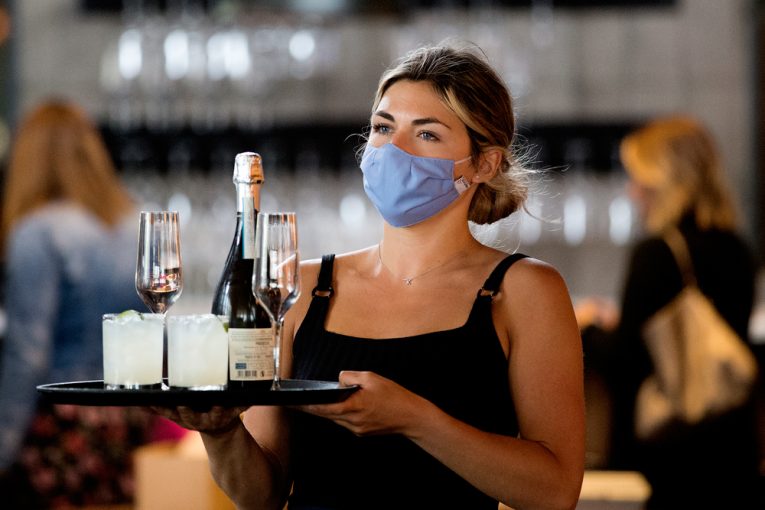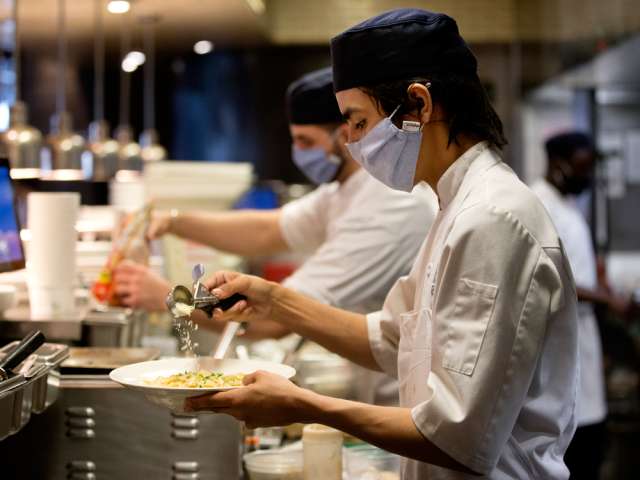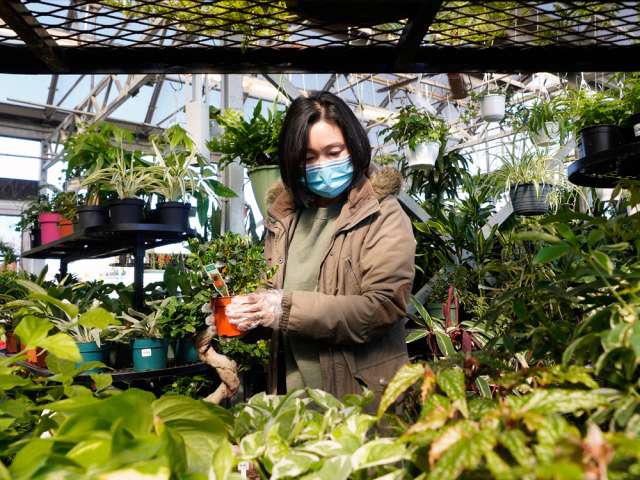
CALGARY – Ernie Tsu is making preparations for the second phase of Alberta’s economic re-launch this Friday, but the owner of Calgary’s Trolley 5 restaurant and brewery has major reservations about the restrictions his restaurants and others will continue to face.
“No restaurant will be at 100 per cent capacity because we’re still mandated to keep every table two metres apart,” said Tsu, who is also a founding board member of the Alberta Hospitality Association (AHA). The AHA is asking the provincial government to consider smaller distances like those imposed in Australia and France.
For many smaller, boutique-style restaurants, those distancing requirements will keep their dining rooms operating at 25 per cent to 30 per cent capacity, and even as their fixed costs remain constant.
“The issue is the two metres between tables. It’s crucifying them. We’re going to see more restaurants close here in the next six months, for sure,” Tsu said, adding that the AHA has a meeting scheduled with the provincial government to discuss concerns next week.
The restrictions hinder economic recovery in the province that saw the unemployment rate at 15.5 per cent in May, according to Statistics Canada’s latest Labour Force Survey.
This year, Royal Bank of Canada expects the province’s economy to shrink 8.7 per cent, an outcome that’s second-worst in Canada after Newfoundland and Labrador’s expected 9.9 per cent real GDP contraction for 2020. Alberta unemployment rate will also spike to 11.3 per cent in 2020 — marking the most precipitous drop in the country next year, though Newfoundland and Labrador will also struggle with a 15.1 per cent unemployment rate, RBC said in a report released Wednesday.
We’re going to see more restaurants close here in the next six months, for sure
Ernie Tsu
Unlike other major Canadian provinces that came into the COVID-19 induced recession from a position of strength, Alberta was in a recession even before the pandemic hit. RBC estimates show the province’s real GDP contracted by 0.6 per cent in 2019 and unemployment had crept up from 6.6 per cent in 2018 to 6.9 per cent in 2019.
The bank’s senior economist Robert Hogue said in the report that Alberta, Newfoundland and Labrador and Prince Edward Island would post the slowest economic recoveries in the country following the coronavirus pandemic.
“Full recovery will be a long and bumpy road for all provinces — easily stretching into 2022 or beyond in some cases,” Hogue wrote.
Alberta Premier Jason Kenney announced Tuesday the province would accelerate the timeline for Phase 2 of its planned re-launch to allow gyms, massage parlours, beautician services and other businesses to re-open this Friday as long as physical distancing guidelines are followed.
Kenney estimates Alberta has earmarked $13 billion in direct aid, incentives and deferrals during the pandemic.
The province’s estimated budget deficit is expected to triple to $20 billion this year. That would be necessary as the pandemic and oil price crash has caused Alberta’s government to rethink its budgets and financial assumptions.
“In the coming weeks, I’m planning to release our economic recovery plan that will outline our strategy to ensure Alberta is well positioned for recovery, investment attraction and job creation,” Alberta Finance Minister Travis Toews said in an emailed statement.
Toews referred to “dual challenges” faced by Alberta, which are the coronavirus pandemic and the collapse in oil prices, which have hammered the province’s largest industry and a key source of provincial government revenue.
“Government is adjusting and responding to the impact of these seismic events, and we are planning to release a fiscal update in August that will include a revised economic outlook,” Toews said.
While the oil price crash has been intense, the sector that has seen the most job losses is the service and hospitality industry in Alberta, said Charles St-Arnaud, chief economist with Alberta Central, which offers a banking platform and service to the provinces’ credit unions.
“You’ve had a decline in employment in that sector by about 50 per cent. One out of two workers in that industry lost their jobs,” St-Arnaud said.

Looking at data from OpenTable, an application that allows patrons to book tables at restaurants, he said restaurant activity in Alberta is 61 per cent lower than a year ago.
But the real concern, St-Arnaud said, is what happens to businesses at the end of the summer when programs from the Alberta and federal governments to support businesses through the pandemic run their course, and the true extent of the recession will be clearer.
“I feel the next two to three months will feel relatively good because there’s a lot of support in the system. But once the support runs its course, we’ll know how far below pre-pandemic activity we’ll be,” he said.
It is possible, however, that better-than-expected infection rate declines in Alberta could lead to more business confidence in the province.
“Moving to stage two sooner than expected should be a sign of confidence. We’ve done everything we should have, we’ve done it right and our system has been able to accommodate it,” said Adam Legge, president and CEO of the Business Council of Alberta.

Most business associations were pleased to see the second stage proceeding ahead of schedule as infection rates remain low. On Tuesday, the province recorded 27 new cases of COVID-19, bringing the total number of active cases to 356. Total recovered cases sit at 6,722.
“Each day that our business owners are unable to open for business is a painful one. This early re-launch will help many Edmonton businesses to reconnect with their customers and begin the slow process of rebuilding their revenue streams,” Edmonton Chamber of Commerce president and CEO Janet Riopel said in a release.
Still, the recovery can be precarious. In recent days, Edmonton has seen a jump in coronavirus cases after steadily falling in much of May.
One positive sign — from a market demand perspective, though not from a public health perspective — is that some patrons have been calling restaurants asking for private rooms to host 20 to 30 people at their restaurants, Trolley 5’s Tsu said.
While that may not be possible as only six people are allowed per table, the requests seem to show consumers are ready to venture out and spend again. But it also underscores the point that the public is misinformed about physical distancing requirements, Tsu said.
Financial Post
• Email: [email protected] | Twitter: geoffreymorgan
You can read more of the news on source
